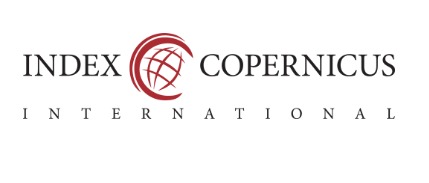Encounter with the ’stones’
Abstract
Aim: The study focuses on the sculptures of German artist Eva-Gesine Wegner, who spends a lot of time in Malta and creates her works primarily out of stone, wood, and clay. She draws a line between the temples of the Maltese Neolithic era and the statuettes of the goddesses’ bodies found there. Wagner draws parallels between her feelings and the temples, which she sees as symbols of the transcendent. Her sculptures show how she felt connected to female ancestry and how she reacted to the natural world. The spiritual significance of fertility, life, and death permeates her works.
Method: Works that evoke prehistoric imagery will be analysed and discussed using Jungian criteria. Incorporating Maria Gimbutas’s theories on the significance of the early European origins and her Goddess philosophy would lend credence to Wegner’s representation of the saint’s woman. A scholar conducts a semi-formal interview with the artist to better comprehend her dedication to the creative process and her fascination with the ancient history of Malta.
Findings: The sculptures of Eva-Gesine Wegner are more than just a symbolic connection to antiquity; they evoke emotion, and the artist is undoubtedly attempting to show viewers images that recall maternity, the female aspects of birth, life, and death, and the cycles or role of nature in human existence. She considers the arts to be a spiritual practice. It’s a metaphor for her reaching the pinnacle of her spiritual potential.
Implications/Novel Contribution: As this investigation shows, Eva-Gesine Wegner is trying to express her sense of personal and spiritual fulfilment as a woman by connecting her work to the ancient history of Malta.
References
Bandmir, S. M. A. A., & Mehrpouyan, A. (2015). Designing and implementing knowledge industry: An integrative framework for universities. Journal of Advances in Humanities and Social Sciences, 1(1), 29-41. doi:https://doi.org/10.20474/jahss1.1.4
Gimbutas, M. (2001). The living goddesses. California, CA: University of California Press.
Gimbutas, M., & Marler, J. (1991). The civilization of the goddess: The world of old Europe. San Francisco, CA: Harper.
Gimbutas, M. A., & Gimbutas, M. (1989). The language of the goddess: Unearthing the hidden symbols of Western civilization. New York, NY: Harper Collins.
Jung, C. (1964). Man and his symbols. London, UK: Pan Books Ltd.
Paris, R.-M., & Tuck, L. E. (1988). Camille: The life of camille claudel, rodin’s muse and mistress. New York, NY: Arcade Publisher.
Robertson, R. (2009). Jungian archetypes: Jung, godel, and the history of archetypes. New York, NY: Open Road Distribution.
Rountree, K. (2001). The past is a foreigners’ country: Goddess feminists, archaeologists, and the appropriation of prehistory. Journal of Contemporary Religion, 16(1), 5-27. doi:https://doi.org/10.1080/13537900123321
Tatiyanantakul, W. (2017). Urban tour tetâA˘ Zs urban talk; guidelines for tourism promotion by cultural heritage ´ on urban landscape in Roi Et province, Thailand. Journal of Advanced Research in Social Sciences and Humanities, 2(4), 200-210. doi:https://doi.org/10.26500/jarssh-02-2017-0305
Veen, V. (1992). The goddess of Malta: The lady of the water and the earth. Haarlem, Holland: Inanna-Fia.
Von, E. G., Burkhard, F. L., & Suzanne, B. (1998). When the stones arrived/aux pierres de departement: Eva-gesine wegner as bildhauerin im dialog mit camille claudel/eva-gesine wegner comme sculptrice and dialogue avec camille claudel. Franzosisch, Deutsch: Christel Gottert Verlag.
Von, F. M. L. (1964). The process of individuation. London, UK: Aldus Books.
Wegner, E. (2000). Case interview preparation. Retrieved from https://bit.ly/2EVCDEW (accessed on 12 July, 2006)
Yazici, H. (2016). The art of opera in Turkey within the scope of culture-art policies. International Journal of Humanities, Arts and Social Sciences, 2(5), 159-164. doi:https://doi.org/10.20469/ijhss.2.20001-5

This work is licensed under a Creative Commons Attribution-NonCommercial 4.0 International License.












.png)










